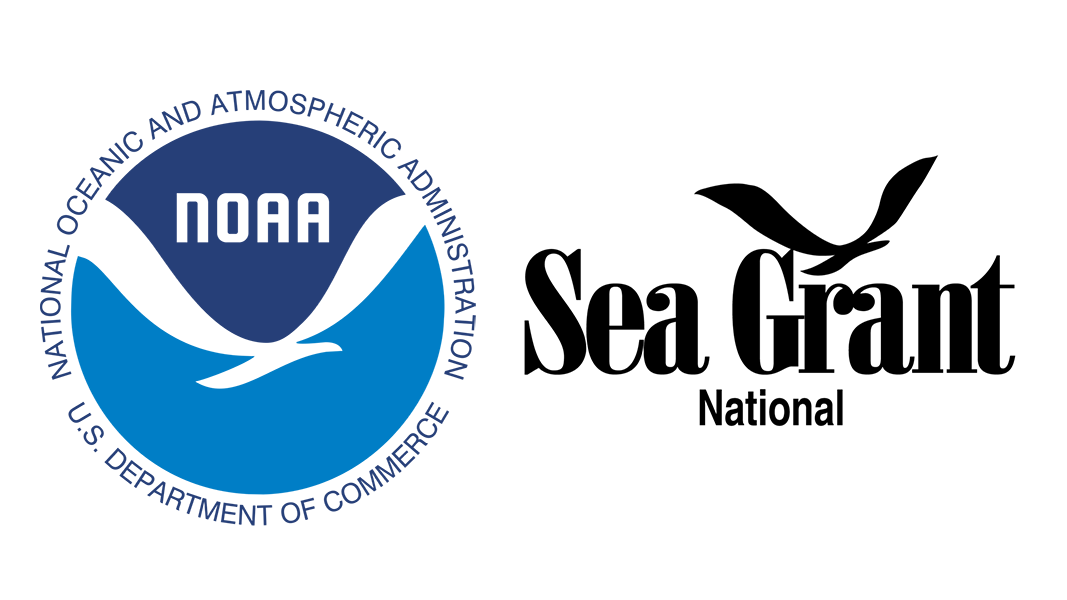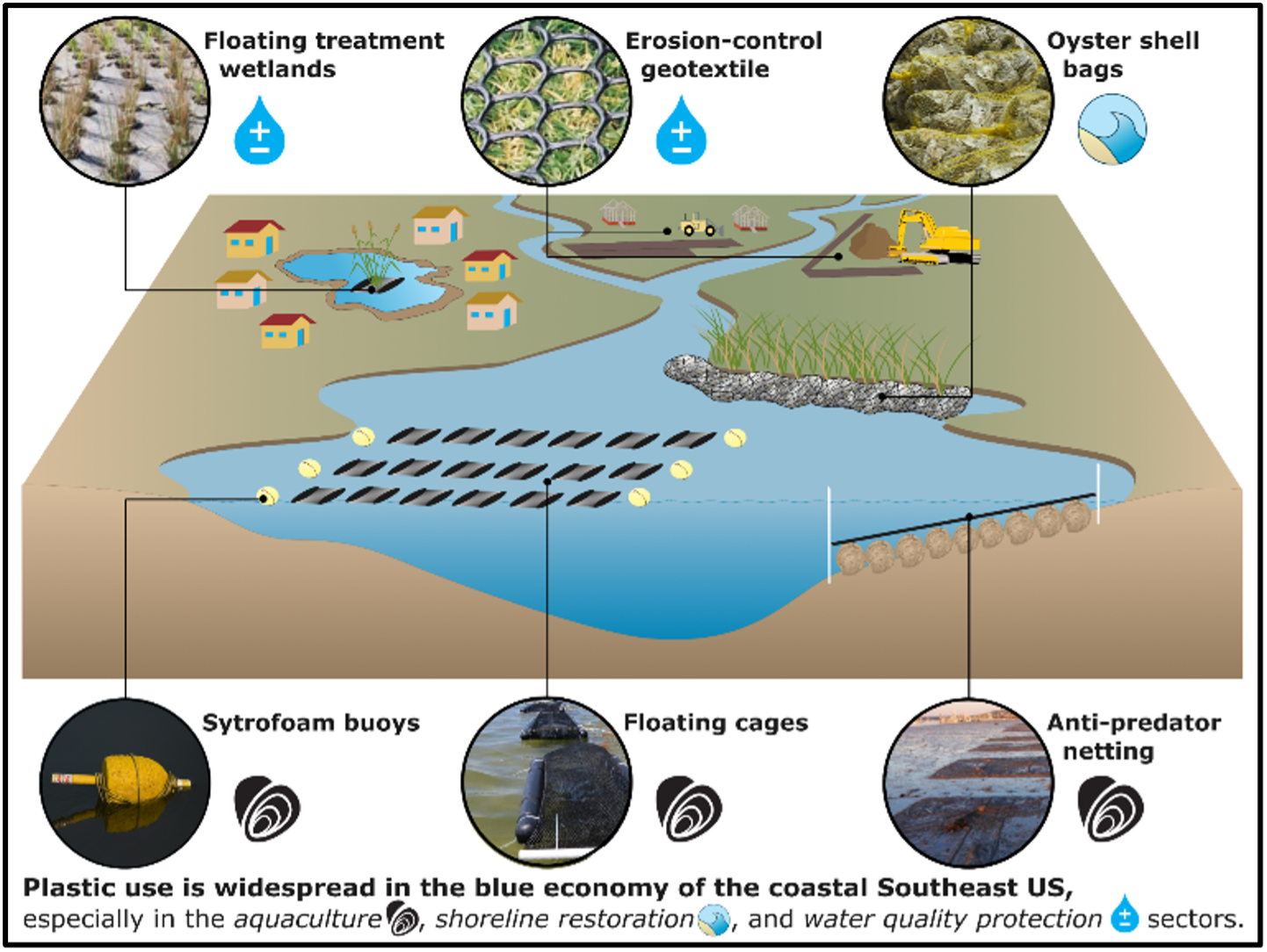From blue-gray to blue-green: facilitating the transition to non-plastic natural material use within the coastal zone economy
Researchers:
Program overview
 This project is funded by the National Sea Grant College Program of the National Oceanic and Atmospheric Administration (NOAA), whose mission is to enhance the practical use and conservation of coastal, marine and Great Lakes resources in order to create a sustainable economy and environment. Sea Grant has focus areas in Healthy Coastal Ecosystems, Sustainable Fisheries and Aquaculture, Resilient Communities and Economies, and Environmental Literacy and Workforce Development. Sea Grant works closely with communities across the country to address marine debris challenges in marine, coastal and Great Lakes environments. Through research, extension and education, Sea Grant is informing and enhancing strategies to prevent the creation of marine debris and remove marine debris from the environment.
This project is funded by the National Sea Grant College Program of the National Oceanic and Atmospheric Administration (NOAA), whose mission is to enhance the practical use and conservation of coastal, marine and Great Lakes resources in order to create a sustainable economy and environment. Sea Grant has focus areas in Healthy Coastal Ecosystems, Sustainable Fisheries and Aquaculture, Resilient Communities and Economies, and Environmental Literacy and Workforce Development. Sea Grant works closely with communities across the country to address marine debris challenges in marine, coastal and Great Lakes environments. Through research, extension and education, Sea Grant is informing and enhancing strategies to prevent the creation of marine debris and remove marine debris from the environment.
Project summary
Materials employed in critical coastal economic sectors are dominated by plastics, contributing to an ever-increasing marine debris problem. Three key coastal sectors (aquaculture, restoration, and water quality protection) vital to ecosystem services are of particular concern due to their location within ecologically sensitive and physically harsh environments, rapid economic and population growth, and inherent reliance on healthy ecosystems. Natural materials (e.g., coir, jute, wattle, wood, hemp) have a long history of traditional use in these sectors, but have been displaced by non-biodegradable proprietary alternatives (i.e., plastics and polymer composites) that accumulate and persist in marine and estuarine environments.
The need for new approaches blending traditional ecological knowledge with modern engineering have been documented in the Marine Debris Act of 2006 as amended. Innovative applications of materials, such as cement-coated coir for oyster reef restoration, show tremendous promise to guide an emerging circular economy reflective of a balanced triple bottom line of sustainability.
 By focusing on coastal South Carolina (SC), our study provides a unique opportunity for culturally responsive advancements, inclusive of Gullah Geechee cultural knowledge and African American stakeholder engagement into the ideation and scaling of innovative alternatives. However, these alternatives cannot gain traction until proven in the unique climate, tidal regime, photooxidative, and economic setting of coastal SC. Moreover, stakeholder adoption will lag without demonstrated success. To address this opportunity, we propose to catalyze the replacement of plastics with natural materials in SC via testing from lab to mesocosm to field pilot scales, leveraging regional partnerships and community linkages for maximum impact. Data gathered will include material properties (of virgin and environmentally conditioned natural surrogates), material and labor costs, estimated useful life, and core purpose performance (e.g., shoreline stabilization, oyster recruitment, water quality improvement).
By focusing on coastal South Carolina (SC), our study provides a unique opportunity for culturally responsive advancements, inclusive of Gullah Geechee cultural knowledge and African American stakeholder engagement into the ideation and scaling of innovative alternatives. However, these alternatives cannot gain traction until proven in the unique climate, tidal regime, photooxidative, and economic setting of coastal SC. Moreover, stakeholder adoption will lag without demonstrated success. To address this opportunity, we propose to catalyze the replacement of plastics with natural materials in SC via testing from lab to mesocosm to field pilot scales, leveraging regional partnerships and community linkages for maximum impact. Data gathered will include material properties (of virgin and environmentally conditioned natural surrogates), material and labor costs, estimated useful life, and core purpose performance (e.g., shoreline stabilization, oyster recruitment, water quality improvement).